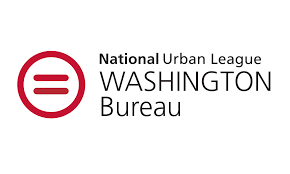We must view the battle for the design of the new, clean energy system through the same lens we use to view broader struggles for economic and civil rights. As environmental justice advocates have shown, the environmental racism faced in communities like my father's hometown (where I spent many of my childhood summers), Port Arthur, Texas, leads directly to poor health outcomes. We see similar patterns repeating themselves in the clean energy economy. Our work today, in this moment of transformation of our energy system to one built on cleaner energy, is to reveal the links between the design of the energy system, as effectuated through a series of energy policy decisions, and nearly every aspect of life.
The energy system routinely sacrifices Brown, Black, and Indigenous bodies to keep the lights on for the majority. Racial capitalism, as legal scholar Nancy Leong describes, is "the process of deriving social and economic value from the racial identity of another person." In many ways, racial capitalism forms the bedrock of the global, fossil fuel–based energy system. In its current design, the energy system requires a permanent underclass that can be exploited and from which resources can be extracted.
We see this clearly in Port Arthur, but we can also observe this phenomenon around the United States and throughout the global economy. Pipelines and transmission lines cut through rural communities and Indigenous lands, rendering valuable natural resources useless and compromised.
This marginalization links to the nation's genocide of Indigenous peoples in the name of economic growth and American progress. The coal industry's barbaric practice of blasting the tops off mountains has also left deep scars on poor, White communities, also in furtherance of economic progress.
Transmuting these sacrificed landscapes and bodies into thriving places requires understanding the energy system's design. Physically, the fossil fuel economy requires a substantial, toxic footprint. Because fossil fuels are not located uniformly throughout our geography, certain communities, like Port Arthur, become sacrifice zones that are more prone to the array of health and environmental hazards detailed earlier in this chapter.
This footprint explains why entire communities find themselves in harm's way. As environmental justice advocates have long highlighted, racism explains why people of color are more likely to live in such impacted communities. Still, rural communities and poor White people also suffer mightily within the current energy system. These White communities should tie their fates to those fighting for energy justice in Black and Brown communities.
The modern energy system depends on the investments of large corporate entities to extract, transport, refine, and burn the fossil fuels abundant in communities like those found in the Golden Triangle and coal country. As residents of Port Arthur know well, these corporate entities bristle against safety and health standards and are loathe to follow even the minimum federal standards regarding clean air.
The fundamental misalignment between the entities relied on to shepherd energy resources from point to point, and the broader public interest contributes to an unjust energy system.
This misalignment is replicated in the electricity sector. Since the early 1900s, we have relied on large IOUs to build the infrastructure needed to electrify our communities. As described, IOUs operate much like the modern corporation, which can sometimes lead to the prioritization of shareholder profit over customer safety. These choices, along with the policies that permit them, further entrench inequality and racialized harm.
As the clean energy system begins to take shape around the world, we have a chance to remedy the harmful features of the fossil fuel system. The ubiquity of clean energy resources and innovations in the scale of clean energy production holds great promise for structural change. Still, we can already observe the emergence of new sacrifice zones in the name of clean energy and a new form of racialized capital. For example, the state of Oaxaca in southern Mexico is the second poorest state in Mexico, home to no fewer than fourteen distinct Indigenous groups that speak distinct Indigenous languages
In the early 2000s, the US Department of Energy identified the Isthmus of Tehuantepec, the narrow strip of land sandwiched between the Atlantic and Pacific, as one of the windiest places in the world. Indigenous farmers and fishers live off the land and ocean in the isthmus, the poorest place in Oaxaca state. The communities in the region have recently seen the exponential growth of wind farms in the area without the people's consultation or consent.The region's extraordinary amount of clean energy development has done little to change the economic circumstances of the people in the isthmus, let alone offer a pathway to access cheap energy. Instead, the development has led to extensive conflict, dispossession, and environmental harm. We are ready to turn the page of this familiar playbook, written and implemented by the fossil fuel industry all over the world, but we need a radically different text.
The contours of the energy system are up for grabs in the transition. The ability to access and shape energy policies that create clean air, clean water, open space, and affordable electricity turns on the design of the new system. Just as early environmental justice advocates drew the link between toxic dumping in Black communities and civil rights, the rights to access and shape clean energy policy in service of marginalized communities should be seen as part of the corpus of civil rights. Energy policy is the domain of the next generation of civil rights.



